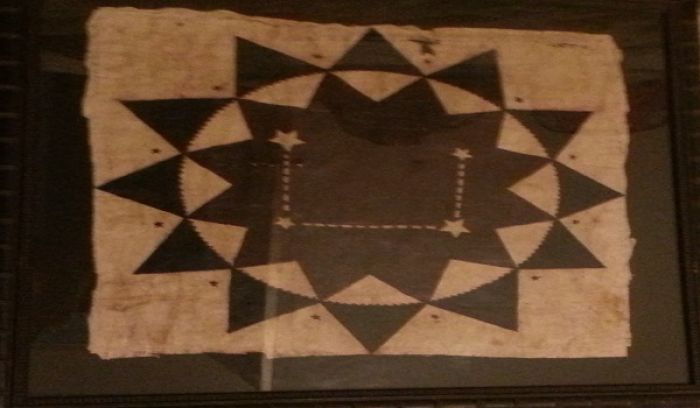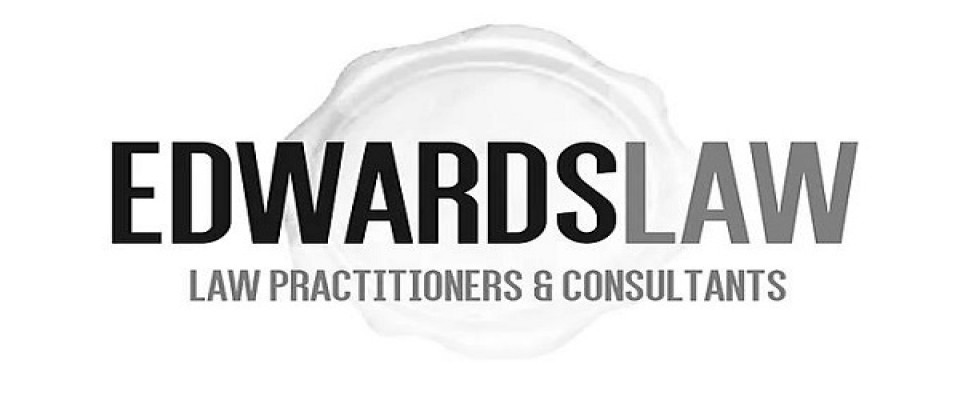Tangaloa and Langi Featured

Tangaloa and Langi
By Tevita Fale
In this article we will spend some time in decoding some of Tonga’s ancient history of theHa’a Tangloa and langi, as well as the relation of Tangaloa to the leadership and government structure throughout Polynesia.
The information shared in this article, is extracted from a Book I have written titled, “The Tongan Empire”. The Tongan Empire work is an accumulation of 17 years of my research and completed in 1997, the book has not been published, but is an important next step in my efforts to diffuse my life work.
I used the traditional practice of “fehokonahau” , the two historical records of the Tu’i Tonga line as recorded by the Catholic priests consisting of 39 Tu’i Tonga and the efforts of Shirly Baker which records 48 Tu’i Tonga, as well as the remaining physical ruins found throughout Tonga to compile my own Tu’i Tonga List (to be released in my next article),the Tangaloa and Langi.
The “fehokonahau” refers to a common practice in ancient Tonga in which the residence of a Tu’i (King) or ‘Eiki (Noble) would retain the name of the Tu’i or ‘Eiki after death. This practice led to the naming of a matapule of the Tu’i Pelehake in Foa, Ha’apai as Matapule Fehokonahau.
The history of Tonga, and that of all Polynesia, is very long and extremely complex, and at the core of this history is the Ha’a Tangaloa. This is why it is imperative to have a true and solid understanding of the basic pattern of Tongan (Polynesian) culture to know the right things to look for, and to properly decode the findings.
As mentioned in my previous article there are 5 main aspects of Ancient Tongan (Polynesian) Culture:
Build the Mound
Build the Fale Lalava
Lay the Mats
Prepare the Kava
Begin the discussion.
The most long lasting evidence from this pattern is the mound. To this day there are thousands of mounds throughout Tonga which are a powerful source of of information and context when combined with Ancient names of various historical locations, ancient natural water springs, as well as the vast oral history of Tonga before, during, and after the time of Ha’a Maui (Maui Clan/Line) in Lolofouna and the Ha’a Tangaloa (Tangaloa Clan/Line) in Langi.

This map show the Ha’a Tangaloa Residence, Ha’a Maui Residence, Pulotu, and the 6 Tu’i Tonga settlements throughout Tongatapu. 1. Tonga 2. Talikitonga 3. Toloa 4. Mo’ungalafa / Tafeta 5. Ha’aloto 6. Fangalongonoa / Mu’a. The red star signifies the Tangaloa residence which is currently called Tapuhia. A. Is Kolopelu the Temple ground of Tangaloa. B. Is Lolofouna that is the mound of the Ha’a Maui. C. Is Pulotu a location related to the afterlife which were connected to Tangaloa and Langi. The circles represent the several mounds and/or earth pyramids found throughout Tonga.
As I shared earlier there are many mounds, earth pyramids, and wells found throughout Tonga that have historical significance. There are no rivers found throughout Tonga, with a few streams and the main source for water were wells that were dug up. These landmarks were often named and maintained names that tie them to key historical individuals and events.
Here are some of these important landmarks and names related to the Tu’i Tonga, Tangaloa and Langi:
Tapuhia – the residence of the Ha’a Tangaloa, it was once a very high geographical location. But due to quarrying of the stone it is low and is currently being used for landfill in Tonga.
Kolopelu – This is the sacred mound or Temple grounds of the Ha’a Tangaloa
Toa* – One of the entrances into Langi in which Tangaloa would enter and leave Langi. Toa is the name of the location and is currently misunderstood to be a tree (in the story of the origin of the first Tu’i Tonga ‘Aho’eitu) rather than the name of one of the entrances to Langi.
Fetoa* – This is an area named due to the large number of Toa (Iron Wood) trees growing in the surrounding area.
Tau* – Named after the astronomical knowledge of Tongans regarding the Milkyway and Equator.
Kau* – Named after the astronomical knowledge of Tongans regarding the Milkyway and Equator.
Pau* – This refers to the concept of certainty and order in regards to all political, social, and scientific aspects of Tongan culture.
Pangai* – This is the designated locations to host all cultural events.
Totoate or Ate* – This is origin of the Tongan proverb, “Tangi fai mei he ate”
Tefisi* – This the Ancient Tongan Name for Fiji, The Tongans named Fiji Tefisi, because when they discovered Fiji’s high islands they looked like a flower floating in the Ocean i.e. the name Tefisi.
Toafa* – This is a reference to a wilderness.
‘Apitaki* – This is the designated location for where things were carried up into Langi.
‘Ahau* – This is where the High Priest lived and performed his religious duties.
*These are names found throughout Tonga near the six Tu’i Tonga settlements that are named and connected to Langi, the Tu’i Tonga’s residence which is also related to the Tangaloa residence as well.
These are a few of the most significant locations and names in Ancient Tongan history. It is too vast to attempt to explain the significance of each location for the purposes of this article.
However, a key concept to note, is that every location in which the Tu’i Tonga resided was referred to as Langi, and was so from the first Tu’i Tonga ‘Aho’eitu (450 AD) to the last Tu’i Tonga Laufilitonga (1865 AD). Tonga is the only location throughout Polynesia in which Langi’s are located, this is because the Tangaloa and Langi go hand in hand just as the Tu’i Tonga and Langi go hand in hand. The only references of Langi throughout other islands in Polynesia is in reference to the sky.
The key concept to note, is that every location in which the Tu’i Tonga resided was referred to as Langi a physical location and not the sky, and was so from the first Tu’i Tonga ‘Aho’eitu (450 AD) to the last Tu’i Tonga (1865 AD).
It is important to note that Tongan history begins long before the time of Tangaloa’eitumatupu’a (‘Aho’eitu’s Father), Ilaheva (‘Aho’eitu’s Mother), and‘Aho’eitu himself(the first Tu’i Tonga). A history that from all indication goes back hundreds possibly thousands of years before these three historically significant individuals.
Here are some of the cultural references used by Polynesians for multiple generations before the era of Tangaloa ’Eitumatupu’a , ‘Ilaheva, and ‘Aho’eitu the first Tu’i Tonga:
Tonga’umutakitaki – Refers to women brought to Tonga from throughout the Pacific as potential child bearers for the Ha’a Tangaloa. Children born from the Ha’a Tangaloa would return to their home islands and become rulers in those islands. This lead to such leaders as Tu’i Manu’a of Samoa and ‘Aho’eitu the First Tu’i Tonga his mother being from Niuatoputapu.
Tumuvakili – This refers to the selection of the most beautiful women of chiefly lineage.
Laumanuva’inga – Literally refers to schools of birds playing, another reference to the women selected in this ancient practice.
FinePani *
Fine’ulie*
Fineupepe*
Fangalahi – The main harbor used by all the citizens of the Empire would use when traveling to Tonga.
Tokatufa – This also refers the implementation of Tonga’umutakitaki where the children of Tangaloa were to become leaders throughout the various islands in the Tongan Empire by laying the foundation for leadership and government.
* This refers to the 3 different class of women presented at Langi, in accordance to their unique talents, beauty, and or chiefly lineage.
In our next article we will explain more of the origins of ‘Aho’eitu the first Tu’i Tonga and how this began a new era of Tongan history.
1 comment
-

MĀLŌ TEVITA FALE...'Oku mahu'inga 'aupito ho'o fakatotolo mo e fa'utohi puipuitu'a ki hotau tupu'anga faka-fonuá. 'Oku 'ikai ko e faka-anga lotokovi eni; ko e lafo atu ha poupou mei ho kaungā fakatotolo puipuitu'a (peer researcher). Ko e me'a mahu'inga 'aupito 'oku ke fokotu'utu'u ke fakahokó, pea 'ofa 'e vave mai ha ola lelei ketau 'inasi ai 'a e Tonga mo e Polinisia kotoa.
1) Ko e puipuitu'a 'o hotau ngaahi Tu'i Tongá, mo Honau ngaahi kuonga fakalakalaka (civilizations), 'oku mahu'inga 'aupito ke fakatotolo'i, pea fokifokihi ke ma'u ha ngaahi fakamatala tu'uloa ma'a hotau koloa tukufakaholo (traditional treasures).
2) Ka neongo iá, ko ho'o ngāue fakatotoló, mo e fa'utohí, ko ho'o fokotu'utu'u faka-fuofua, pe faka-mahalo (hypothesis) ketau vakai ki ai 'I he 'etau fekumi fakatotoló, Faikehekehe ia mo e pōlave 'i he ngaahi faikavá, pe ko 'etau felāfoaki 'i he mītiá faiongoongó (popular media).
3) 'Oku ke feinga ke tali 'e he ha'oha'onga fakatotoló (research community) ke fakahoko ko e tui faka-saienisi (scientific theory) 'a e ola ho'o fekumí.
4) Neongo ko e konga lahi 'o 'etau fakatotoló 'oku fakafalala ki he ngaahi puipuitu'a talangutu (oral history) 'o Tonga mo Polinisiá, fananga (myths), mo e fakafuofua mei he ngaahi me'a lalahi faka-fonua mo honau kuonga (cultural events and their era), 'oku tau fekumi mo fokifokihi 'aki 'a e fakakaukau fakaanga (critical thinking), mo e fehufehu'i faka-saienisi (scientific research methods).
5) 'Oku fiema'u ketau 'ohake 'a e ngaahi fakamo'oni (references) 'o tatau ki he fakamo'oni loto-fakamatala (in-text references; end notes, etc.), pea mo e fakamo'oni faka-kātoa (general references). 'Oku kau ai foki mo e ngaahi fakamo'oni mei he ngaahi ta'anga fa'u hiva, fa'u lakalaka, fa'u mā'ulu'ulu, fa'u laulau (chants), maau, etc., pe ko e fakamo'oni 'a e kau punaké.
6) 'Oku fiema'u 'e he kau fakatotolo faka-mā'opo'opó (peer reviewers) ke mahino ho'o tu'uaki mai ha fo'i "mo'oni" pe ko ho'o ma'u meife'ia, pea ko e tupu'anga 'o e me'a na'e hokò 'oku fakatatau ki he fakamatala 'a hai?
7) Mahino foki ko 'etau fa'utohi fakatotolo faka-saienisí ko 'etau tātānaki mai 'a e ngaahi 'ilo kehekehe ke fakamo'oni'i 'aki 'etau ngaahi faka-mahamahaló (hypotheses).
8) 'O hangē ko e akonaki 'a e palõfesa 'i he 'emau kalasi fakatotoló: "Ko ho'o mou fakatotoló ko e fekumi mo e fokotu'utu'u faka-fuofua, mo e faka-mahamahalo pē (hypothesis). 'Oku 'ikai 'ilo mai 'e ha taha kohai kimoutolu (You are nobody). 'E toki fakatokanga'i 'e he kau mataotao mo taukei faka-'atamaí (academic scholars) ho'o mou fakatotoló 'o kapau temou fekumi fakaikiiki ki he ngaahi fakatotolo 'a e kau potó, mo kinautolu 'oku lahiange 'enau 'iló kimu'a 'iate kimoutolú."
Hokoatu ho'o fekumí, Tevita Fale, ketau ma'u monū kotoa ai.



